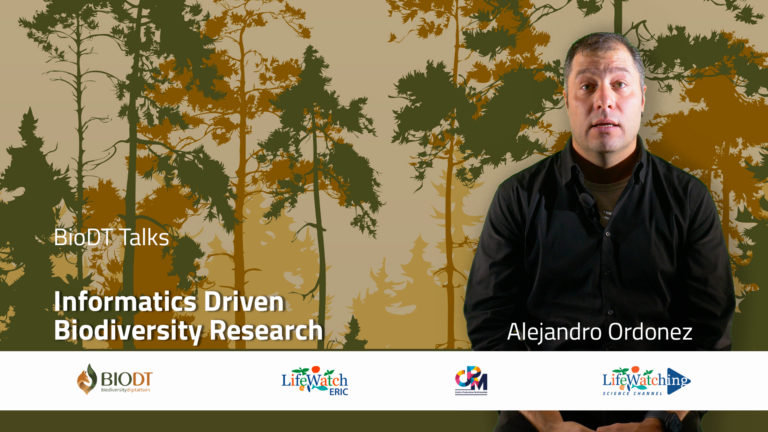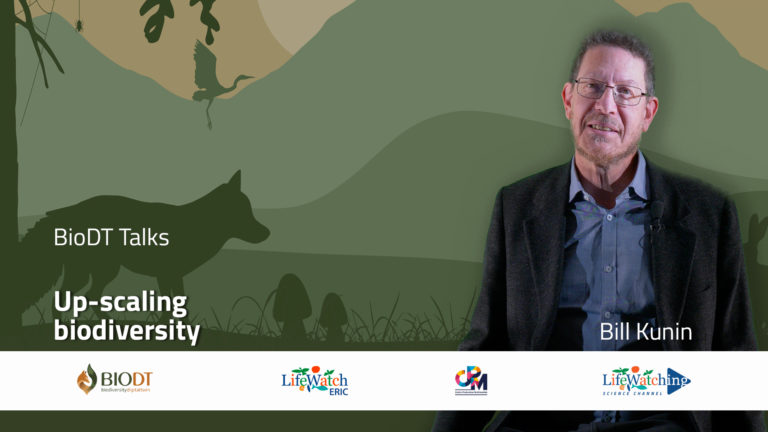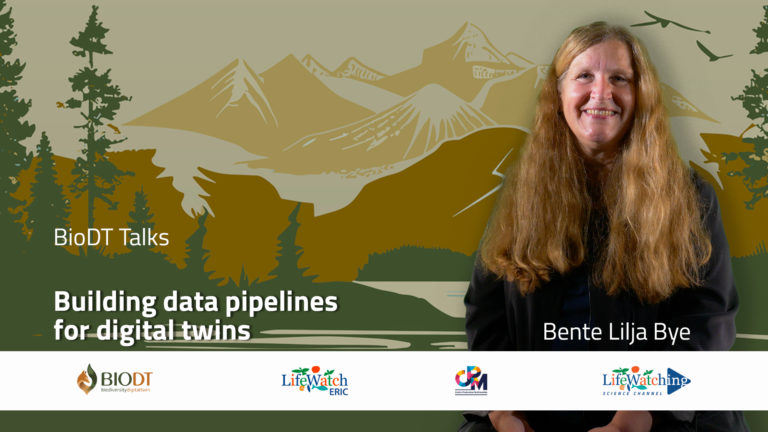“We can no longer afford to be passive observers of ecological change. We must become active drivers of it”. With this compelling message, Dr. Alejandro Ordonez Gloria launches the BioDT Talks, a new 6-part series exploring how data, science, and technology are reshaping our response to the biodiversity crisis.
In this opening talk, Dr. Ordoñez introduces the field of ecoinformatics, where AI, remotesensing, and ecological theory are combined to forecast the future of nature and guide proactive decision-making. From predicting species shifts to building digital twins of ecosystems, today’s tools give us a historic opportunity: not just to see what’s coming – but to choose a different outcome.
Watch the video and find out more!
Explore all the videos of our Biodiversity and Ecosystems section.
“Biodiversity is intrinsically scale-dependent”. Bill Kunin, University of Leeds, tackles one of spatial ecology’s biggest challenges: how do we accurately upscale biodiversity data?
There are various reasons researchers might want to upscale biodiversity: to estimate biodiversity in little-know areas; to predict larger-scale effects from fine-scale experiments; to monitor biodiversity changes across multiple scales; to model spatially realistic futures, and for example develop more accurate digital twins of ecosystems. Moreover, it allows to assess scale-specific biodiversity impacts, as in case of habitat fragmentation, alien species, and climate change that may affect biodiversity differently at different scales.
But upscaling biodiversity presents several challenges: unlike simple additive variables, biodiversity is subadditive – two areas with 6 and 4 species don’t necessarily contain 10 species together due to overlap. This makes scaling from local observations to regional or global assessments particularly complex.
Watch the video, and find out more!
- 12 May 2025
- BioDT Talks
Remember searching for the first spring flowers as a child?
In our third BioDT Talks episode, Bente Lilja Bye shares how her childhood quests for Hepatica nobilis in Norway and her mother’s meticulous nature diaries evolved into groundbreaking work in biodiversity data science!
“As a little girl, I was roaming around in the forest in spring, enjoying the fact that the snow had melted… looking for the first spring flower was one of the favourite activities for kids,” Bente recalls. Discover the fascinating journey from handwritten nature observations to sophisticated Digital Twins for biodiversity, virtual replicas that create dynamic simulations of real-world ecosystems through continuous data feedback loops. Watch the video, and find out how we can transform data into new knowledge.



